Today, we are pleased to introduce William Fliss as part of the Wisconsin Historical Museum’s History Sandwiched In lecture series. The opinions expressed today are those of the presenter and are not necessarily those of the Wisconsin Historical Society or the museum’s employees. William Fliss has been an archivist at Marquette University in Milwaukee since 2003. An ardent Tolkien fan since childhood, Bill assumed the dream job of being curator for Marquette’s JRR Tolkien manuscript collection in 2012. Since 2013, he has presented bimonthly public showings of original Tolkien manuscripts, drawing visitors from all over the US and Canada. Since 2014, he’s taught an annual honor seminar at Marquette on the “Lord of the Rings,” incorporating Tolkien’s manuscripts into the instruction. A native of Wisconsin, he received a master’s degree in history and a master’s degree in library and information science from the University of Wisconsin Milwaukee. In his free time, Bill is currently completely a doctorate in US history at Marquette. Here today to share how those manuscripts came to reside in Wisconsin, please join me in welcoming William Fliss. [applause]
– Thank you, Katie. Hello, everyone. It’s a pleasure to be with you today, and I’d like to first begin by thanking you all for coming indoors on this absolutely gorgeous afternoon to come and hear me talk about the JRR Tolkien manuscript collection. What I’d like to do is introduce you a little bit to the collection, talk about it, define it a little bit, and then provide some biographical information on Tolkien. And then talk about what we’ve learned from the manuscript collection about JRR Tolkien as an author and what we learned about, as he wrote these books, what we learned about him. Let me just begin by defining what’s, when we say the JRR Tolkien manuscript collection, what that is. Marquette University owns the manuscripts for four of Tolkien’s works of fiction. There’s “The Hobbit,” which was his first published work of fiction, published in 1937. We have that manuscripts for a work called “Farmer Giles of Ham” some of you may be familiar with.
It was written in the 1930s but not published until 1949. We also have the drawings for an illustrated children’s book, “Mr. Bliss,” that Tolkien did in the 1930s but was actually not published until after Tolkien’s death In 1982, “Mr. Bliss” was published. And then last, but certainly not least, we have the manuscripts for his magnum opus, “The Lord of the Rings,” which we understand as being a trilogy, “The Fellowship of the Ring,” “The Two Towers,” and “The Return of the King,” but, interestingly, the concept of “The Lord of the Rings” as a trilogy is really an artificial construction that the publisher imposed on the work. Here I have a one-volume edition of “The Lord of the Rings,” and this is really how Tolkien intended it to be presented, as one volume. It makes sense if you look inside of it and see that it’s these six books, which are really meant to be in one volume rather than being split up, books one and two in “Fellowship,” books three and four in “The Two Towers,” and books five and six in “Return of the King.” This was a decision made by the publisher to save costs. It was published over the course of 1954 and 1955. It was a very expensive book to publish, and so they were saving costs on splitting it up into a trilogy. And they actually anticipated losing money on the book. Little did they know that by the time “The Return of the King,” the third volume, was published in England in autumn of 1955, that “The Fellowship of the Ring” would have sold out and they would be hurriedly printing additional copies.
So this is an overview of the collection. Now, when we say that we have the manuscripts for these works, what it means is that we have almost all the material that went into the writing of the books. So, handwritten drafts of chapters, handwritten plot notes, typewritten drafts of chapters, typewritten drafts of chapters that have been edited and annotated, the page proofs, the galley sheets. Almost everything, from the initial conception to when it reached the bookstore shelves, is at Marquette. There are some manuscript pieces that are over at the Bodleian Libraries at Oxford in England. And there are some things that it seems Tolkien might have thrown away at one point, but he kept most everything that he wrote for the construction of these works. And they came, intact really, to Marquette, to Milwaukee, and they really are one of the most, I think, comprehensive literary collections of its kind in the world, being able to have all the manuscripts in one place that can be studied en masse. Oftentimes with a writer’s papers you might find them– James Joyce is a good example where his papers and manuscripts are split up at a whole bunch of repositories. But here, for these works, most all the material is at Marquette, which leads to the big question and the tie-in to the title “Tolkien and Wisconsin,” how did this stuff get here? Tolkien was English.
He never set foot in the United States in his lifetime. So, why are these things here? And it’s really because of the vision of this man, William Ready. He’s standing in front of the Memorial Library on Marquette’s campus. And Will Ready was hired in 1956 to be the, to head this library, and it was a new library. This was a state of the art facility in 1956. In fact, it was the first time in Marquette’s history when it had, the library had its own building. Before the library was, like, in another building with other units. So Marquette was very proud of this library, and they hired Will Ready to stock it with books and manuscripts. And he came from Stanford, and he had a reputation as somebody who could stock books and was a good manuscript hunter.
And within six months of his arrival at Marquette, he had identified JRR Tolkien as somebody whose manuscripts he wanted to try to acquire. And so he reached out to Tolkien through an intermediary. He hired a friend of his, a bookseller in London named Bertram Rota to act as Marquette’s agent in trying to negotiate the sale of his manuscripts. And so Bertram Rota approached Tolkien. Tolkien was receptive of the idea of selling the manuscripts. Keep in mind the timing here. It’s probably very end of 1956 when Rota reaches out to Tolkien. “The Return of the King,” the last volume, had been published in late ’55. So it was as new book, “The Lord of the Rings,” and it was not at all– It had sold very well but it was not at all the phenomenon it would later become.
That really doesn’t seem to really kick in until the late ’60s. And so William Ready really just had the brilliant idea. He was in the right place at the right time and thought to ask. He was the first to ask, and so he was able to acquire these manuscripts for Marquette. Here’s the– He met Tolkien on the fifth of May 1957. He visited him and spent the day with him in Oxford, and then that night, when he got home, he wrote this airmail letter to Will Ready saying, “Dear Will, success! “Tolkien accepts your offer of 1250 pounds for ‘The Hobbit’ and ‘Lord of the Rings’ original material.” Now, Marquette would pay an additional 250 pounds for the “Farmer Giles” and “Mr. Bliss” materials, but it was about 1500 pounds is what Marquette spent to acquire the manuscript collection, which, in 1957, would have been about $4900. It seems like a pittance to us today. Clearly there’s been a lot of inflation over the years since then. And so it was a significant amount of money for its time, but certainly considering its value today and the stature of Tolkien and his popularity, it was an amazingly good deal for Marquette to acquire these manuscripts.
One of the things that I find amazing is that Bertram Rota got to know Tolkien and spent the day with him, but he consistently, in this letter, misspells his name, E-I-N. You know, I shudder whenever I see that. [laughter] I marvel that he could misspell his name after spending the whole day with the guy, but there it is. A little bit more about Will Ready before we leave him briefly. He actually wrote, really, the first book-length critical treatment of Tolkien, “The Tolkien Relation.” He wrote this in 1968 after he’d left Marquette. And Tolkien did not particularly like this book. He was not too excited when he heard that it came out, and then when he read it, he was not very happy. And I think he soured a little bit on Will Ready. It’s a really interesting book to read.
Ready I think got himself into trouble by claiming that the book was based on a number of interviews he had with Tolkien, and he actually had very little contact with him. And so when he’s doing the biographical coverage of Tolkien early in the book, in some cases he seems to be making things up out of whole cloth about Tolkien’s early life and background and his relatives and that. So it wasn’t very well received by Tolkien. In fact, in one letter Tolkien referred to him as a rogue. But, you know, from 1956 to 1963 at Marquette he was our rogue, and we honor his memory at Marquette. The manuscript collection arrived in 1957 and 1958. “The Hobbit,” “The Farmer Giles” material, “Mr. Bliss” arrived in ’57. Tolkien held on to “The Lord of the Rings” manuscripts to put them in better order. And Tolkien was one of these people who started a lot of projects and never really finished them, and he didn’t really, didn’t have the time or didn’t get them to the state he wanted, so he eventually, in 1958, packed the stuff up and sent it to Marquette.
And so the collection’s been here now nearly 60 years this year. And the collection has grown, the manuscript collection, over the years. What’s on the screen here right now, these are the famous Ace Books, paperback editions of “The Lord of the Rings.” “Lord of the Rings” was published in hardcover. In the mid-1960s, Ace Books in the United States received a loophole in the American copyright, and so they quickly went to exploit it and began to mass produce the first paperback editions of “The Lord of the Rings.” This was without Tolkien’s permission or the permission of Tolkien’s publisher. And so Tolkien and his publishers put an end to this by publishing an official paperback edition, a Ballantine edition, in the mid-1960s. And in the course of working on that second edition of “The Lord of the Rings,” Tolkien wrote to Marquette. Ready had left by this point. Tolkien wrote to Marquette asking a question about the manuscripts that he had sent earlier. And then he mentioned that he had a large number of additional manuscripts still in his possession and that they should come to Marquette as part of that sale.
They were still in Tolkien’s possession at the time of his death in 1973, but Tolkien’s son, Christopher, then later sent the manuscripts to join the collection that his father had sent in 1958. Christopher Tolkien is an interesting character. I think as time goes by scholars, looking back years and years from now at JRR Tolkien, will talk about them almost, I think, almost as a pair because Christopher Tolkien was very important in the creation of his father’s work and has been very important in his father’s legacy. We know so much about his father’s writings because of Christopher. And one of the projects Christopher undertook was the 12-volume “History of Middle-earth.” Some of you may be familiar with this. There are five of the volumes that describe and touch upon the writing of “The Lord of the Rings.” And what he did is he used the manuscripts that were still in his possession, and he also consulted with archivists and staff at Marquette to research and write these volumes. And then, when he would finish a volume, he would send the manuscripts that he was done with to Marquette. And so the manuscripts arrived in four installments. So, from the course of 1987 to 1997, the manuscript collection for “The Lord of the Rings” increased by about 50%.
It was a significant amount of material. One thing I probably should mention just to give you a sense of the size of these collections because they are enormous, “The Hobbit” is a 300-page book, there are over 1500 pages of material related to “The Hobbit” at Marquette. “The Lord of the Rings,” this is maybe 1200 pages. I’m sure many of you have gone through it many times. There are over 9,000 pages of material at Marquette for “The Lord of the Rings.” And so what Christopher Tolkien later sent in the ’80s and ’90s was over 3,000 additional pages to join the material. And, interestingly, the stuff that Marquette received in the ’80s, particularly ’87 through ’90, were actually earlier drafts of things than the stuff that had arrived in 1958. It’s very interesting that sort of a reverse. The earliest stuff came later to Marquette. So, 60 years now the collection has been at Marquette.
We keep a permanent display of reproductions from the collection up in our reading room. We are, I describe Marquette in a way as like a medieval pilgrimage site for Tolkien fans. People from all over the world, if they are in Milwaukee, they’ll stop by and try to come into contact with the collection in some way. Two weeks ago, there were three visitors from the Netherlands that stopped in. The Netherlands has a very active Tolkien fan group and fan club. And so these Dutch tourists were in town and stopped by. Every couple months, Katie mentioned this briefly in the introduction, every couple months I’ll do a public showing of some of the actual original material. I have to cap it at about 25 or 30 people because of the space limitations. There’s information about that on our website, if any of you would like to, after hearing this talk, would like to come and actually see some of the original, you’re welcome to do that and to get in touch with me to register.
Every two months I’ll do one of those. So we are, in a way, a pilgrimage site for Tolkien fans from all over the world. Now, one of the things I have to mention at the outset here is that when Marquette purchased the manuscripts, it was determined later that Marquette acquired the physical manuscripts but did not acquire copyright to them. The intellectual property remained with the Tolkien estate. And so the manuscripts cannot be reproduced or published without the consent of the Tolkien estate. I won’t really be able to show any actual images from the manuscript collection. But if you’d like to see some of the original materials, you’re welcome to come for one of those talks, or if you want to stop by Marquette some time, we have our display up where you can see some of those. So, a little biographical information to set the stage on Tolkien. Probably the most important thing to know about JRR Tolkien is that he was an academic.
He spent most of his adult life as a professor at Oxford University. He held a couple of different professorships there, and he was a philologist, which is an unusual word. We don’t really use it much today, but literally, if you look at the Greek words that go into it, it means the lover of words, which is a great description of Tolkien. We today would probably, instead of philologist, we might use linguist as a term. And, in a sense, that’s really what Tolkien was. He had a tremendous capacity for languages. This is a list I compiled from what I can tell of his language proficiencies. These are languages in which he could do academic work. I put a little asterisk next to two of them, old English or Anglo-Saxon and middle English, because it’s safe to say that during his lifetime Tolkien new as much about those two languages as anybody who was alive on the face of the Earth.
But his knowledge and his facility with languages was so great, and as a philologist, he understood how languages are created, the evolution and changes of language over time, that he could take that knowledge and, in this secondary world, this mythology that he developed in his spare time, he could actually create his own languages for the inhabitants of his secondary world to speak. Just amazing facility for languages. Just to back up a little bit on Tolkien’s background, let me just provide a little bit earlier background. He was born in southern Africa. He was born in what was called the Orange Free State. Today it’s part of South Africa. He was there because his father had a job for the British Bank of Africa, and the family was living there. He had a younger brother, Hilary. As a very small child, the two boys were just very close in age.
They struggled with the climate, and so Mabel, the mother, decided to take the boys back to England. They would live with her family, and then Arthur, the father, would wrap up his affairs and then join the family. Well, when Tolkien was four, the father contracted rheumatic fever and died in southern Africa before he could be reunited with the family. And as a result, Mabel Tolkien really was a single parent, raising these two small boys. And she homeschooled the boys, homeschooled Tolkien early on. She was a remarkable woman and taught him languages, art. Her father was a very talented calligrapher, so there was this remarkable artistic ability that came to Tolkien as well. When Tolkien was eight years old, Mabel did something quite dramatic. She became a Roman Catholic.
She converted from the Anglican faith to Roman Catholicism. And, as a result, much of her family distanced themselves from her. And, as a result, when Tolkien was 12 in 1904, when Mabel became ill with diabetes, she really couldn’t afford the medical care she needed, and she died. And so at the age of 12, Tolkien is, and his younger brother, are orphans. Now, Mabel left the boys under the guardianship of a Catholic priest, Francis Xavier Morgan, who was half Welsh and half Spanish. He had been instrumental in her conversion, and she made him the custodian of the boys. And he had access to family money through his Spanish relations, so he was able to finance the boys’ education and, with the help of Father Francis, Tolkien was able to attend King Edward’s School in Birmingham, an excellent school to prepare people for the university. And he, the boys didn’t live with Father Francis. Instead, he ultimately set them up in a boardinghouse and would keep an eye on them and was right near where he lived.
When Tolkien was 15, his life took a dramatic change. There was another boarder who moved into the boardinghouse. Her name was Edith Bratt. She was 18 years old. And she was also an orphan. And the two of them became friends, and then, over time, this friendship blossomed into a romance. Well, Father Francis found out about this and he wasn’t too happy about it. And so he immediately intervened. Now, in part, there was some religious prejudice here.
He didn’t want Tolkien, a Catholic, to be possibly marrying this Anglican woman. But, also, I think he knew he had a bright kid on his hands. Tolkien was a prodigy, and he so some of you parents out there, maybe you wouldn’t want your son or daughter to get married at 18. You want them to go experience the world a little bit. Go to university and maybe get married later. So Father Francis intervened and split the two up. Edith moved away, and he told Tolkien that he could not have any contact with Edith until his 21st birthday when, under British law, he would, you know, Father Francis would cease to be his guardian. And Tolkien loved Father Francis. And he obeyed him.
And the story goes that on his 21st birthday, Tolkien sat down and wrote Edith a letter and sent it to her. She wrote back saying, “Well, I’m engaged to be married.” But he really wanted to see her and he was persuasive and he convinced her to see him and he took the train up and they spent the day together. And then, by the end of that day, she had decided to break off her engagement and marry Tolkien. To make things a little awkward, it’s my understanding that the person she was engaged to marry was her best friend’s brother. So you can imagine how awkward that would be. And so Edith and JRR Tolkien were married, and they were married for 55 years, until Edith died in 1971 and JRR Tolkien died in 1973. And I mention this because those of you familiar with “The Lord of the Rings” or with “The Tale of Beren and Lthien” out of the Silmarillion legends, there’s this kind of this trope of these two lovers who are not committed to be together. There’s maybe an echo of it here in Tolkien’s real life. The other reason I mention this, spent so much time talking about this, is because out of their union came four children, John, Michael, Christopher, and Priscilla, and they’re very important because Tolkien’s fiction, particularly “The Hobbit,” his first published work of fiction, seems to have begun as an oral tale he would tell his children, and then he sat down and started to write it down.
And so they’re very key to his career as a fiction writer. “The Hobbit” was published in 1937. Tolkien had written it years earlier. From what we can tell, the best we can tell is he probably started it in the summer of 1930, and he worked on it and it seems he had finished the manuscript by about January of 1933. So it was about 18 months or a year-and-a-half it took him to write “The Hobbit,” to complete a draft of it. And we think we know that he finished it in January 1933 because Tolkien’s good friend CS Lewis wrote a– Lewis wrote a letter to his childhood friend Arthur Greeves saying I just read the manuscript of this work by Tolkien and, you know, you’d love it. So that kind of helps place when the manuscript was finished. The book wasn’t published until 1937. So right there that tells you that this is a story Tolkien wrote not to get published but because it began as a story for his children and then it became this story that he wanted to tell.
And he passed the manuscript around to various people, and he had given it to one of his graduate students, Elaine Griffiths, and she in turn showed it to an acquaintance of hers, Susan Dagnall, who worked for Allan and Unwin, the publishing company, and that’s really how the publisher came into contact with it and led to its publication. This is the dust jacket for “The Hobbit,” the original dust jacket. Tolkien designed this dust jacket himself. We have, at Marquette, a water color and ink earlier concept of the dust jacket. This is more the finished dust jacket. He originally wanted more colors in it, but the publisher was not going to spend the money. And so they limited his palette, and so this is what he did. But it’s a very nice cover. You can see we have the title, “The Hobbit,” JRR Tolkien beneath it, and then on the spine “The Hobbit,” Tolkien, and George Allen and Unwin identified on the bottom there.
You’ll notice around the border there are– It looks like a decorative border at first glance. But these are actually Anglo-Saxon runes. I mentioned that Anglo-Saxon or old English was a language that Tolkien knew as well as anybody in the world, and so he employed them here on the dust jacket. And so if you transliterate the runes into English and you start at the bottom left, it says “The Hobbit, or There and Back Again, “being a record of a years’ journey made by Bilbo Baggins “of Hobbiton, compiled from his memoirs by JRR Tolkien “and published by George Allen and Unwin Limited.” [laughter] Very clever. It’s an alternative title here, much larger. And it operates almost like a frame narrative for the stories. If you think about it, it says here that this was compiled from Bilbo’s memoirs by Tolkien. And those of you who’ve read “The Hobbit” know there’s this kind of sometimes intrusive narrator that’s there in the story. I think it’s 45 times in the course of “The Hobbit” the narrator speaks directly to the reader.
This is sort of compiled. I like to think that that’s maybe Tolkien’s voice coming through as the compiler of this story from Bilbo’s memoirs. “The Hobbit” was a success when it was published. It sold very well, and, almost immediately, the publisher was on him for a sequel. And interestingly, Tolkien had no intention of writing a sequel, but he sat down and diligently started working on a sequel. Before I say more about that, let me just go through some of the names Tolkien came up in the course of writing “The Hobbit.” These are names that appear in the manuscripts. Tolkien loved names. He loved naming things. And oftentimes names had meanings in his stories.
But he was always changing names. So if we look at some of the iconic names from within “The Hobbit,” some interesting changes took place. Thrr, this is Thorin’s grandfather. Thrr’s map is the map that guides much of the action in “The Hobbit.” Originally it wasn’t Thrr, it was Fimble Fomby. [laughter] Kind of an unusual, unusual name. Beorn, the shapeshifter who they visit in “The Hobbit,” originally his name was Medwed, and then Tolkien switched it to Beorn. Thorin Oakenshield, what an amazing character. Originally Thorin Oakenshield was Gandalf. Very strange.
Gandalf did not, was not, originally was not the wizard. He was the leader of the dwarfs. Gandalf, when he appears in the story early on, it’s actually not Gandalf, it is Bladorthin or Bla-dor-thin. And he decided to switch it. He decided to make the wizard Gandalf, and then he created this name Thorin Oakenshield. And I think, you know, I think we’d all be grateful that it’s Gandalf the Wizard, not Bladorthin. [laughter] Golfinbull, very obscure reference. Golfinbull was the goblin king who invader The Shire, and Bilbo’s ancestor, Bullroarer Took, defeated him, knocked his head off and it sailed through the air down a rabbit hole, and thus golf was invented. [laughter] Golfinbull is a little character that shows up. Originally, in the first drafts, it’s Fingolfin.
Any of you who have read the Silmarillion or are familiar with those stories will recognize the name Fingolfin, and the thought of an Orc King– Because Fingolfin is one of the most heroic characters in Tolkien mythology. I think he’s got the best death scene in all of literature. To have that as a name of a goblin chieftain is awful. And so, fortunately, Tolkien changed it to Golfinbull. Smaug, the dragon, you know, iconic figure. Originally it was Pryftan or pryf tn, which I’m told is the, basically, the Welsh word for dragon. So everything was kind of in flux. Tolkien liked to change things around as he was writing it. So “The Hobbit” was published in 1937, Tolkien starts to work on a sequel in December 1937, and for years he’ll refer to it in letters as “The New Hobbit.” But this becomes what we all know as “The Lord of the Rings.” And it took Tolkien a long time to write “The Lord of the Rings.” 18 months to write “The Hobbit.” He starts writing “The Lord of the Rings,” the sequel to “The Hobbit,” in 1937, we think in mid-December.
It’s not until 1949 that he completes a draft. And then it’s not until 1954 that the first volume reaches the bookstore. So that’s 17 years. So, unfortunately, if you were, say, like a 10-year-old child who read “The Hobbit” in 1937 and loved it and were all excited to learn more about hobbits, you’d be 27 by the time you finally got your wish. But he began working on “The Lord of the Rings” in December 1937, worked on it for a number of years, and keep in mind that, you know, he has four kids, he’s married, he has a very stressful and busy life as a professor at Oxford, so writing his fiction is really his hobby on the side that he’s finding time for. The manuscripts tell us a lot about Tolkien as a writer, and just the sheer size of the collection should tell you, there’s over 9,000 pages of material for “The Lord of the Rings,” that Tolkien was a fanatical reviser. Some people contrast him a little bit with CS Lewis, his friend, who seems to have been somebody who could quickly do an almost publishable draft, like just the first time through. Tolkien needed to constantly work and rework at things. Now, part of that was because, I think, of his perfectionism, but it’s also because of how he went about writing his stories.
Tolkien was not one of these authors who sat down, had an idea, and then mapped out the tale and outlined it and figured out what was going to happen. He started writing and the tales grew in the telling. There’s a wonderful quote that he wrote in a letter to his friend, the poet WH Auden, in 1955 where he’s talking about the writing of “The Lord of the Rings.” He says, Tolkien wrote, “I met a lot of things on the way that astonished me. “Tom Bombadil I knew already, but I had never been to Bree. “Strider sitting in the corner at the inn was a shock, “and I had no more idea who he was than had Frodo. “The Mines of Moria had been a mere name, and of Lothloriene “no word had reached my mortal ears till I came there. “Far away I knew there were the Horselords on the confines “of an ancient Kingdom of Men, “but Fanghorn Forest was an unforeseen adventure. “I had never heard of the House of Eorl “nor of the Stewards of Gondor. “Most disquieting of all, “Saruman had never been revealed to me, “and I was as mystified as Frodo at Gandalf’s failure “to appear on September 22.” This gives you a sense of Tolkien.
The stories really grew in the telling. But when you write a story that way, it means that if you change the story later in the writing process, you have to go back and rework and bring everything into agreement with it. And so this, I think, explains in part why there are so many pages in the manuscript collection because if he changed something, he might have to go and revisit earlier chapters and rework them. And some of the chapters, the numbers of drafts are amazing, stretching into the teens. It seems to be the most reworked drafts were the first chapter, “Long-Expected Party.” “The Council of Elrond,” and then also the second chapter, “Many Meetings,” which was originally called “Ancient History.” So there’s just a lot of reworking that was done. Name changes, there were a lot of these as well. Let me go through a few of these here with you. Arwen, whom Aragorn marries, she’s the daughter of Elrond. Originally her name was Finduilas, which is a name he had pulled, I think, from his other mythology, from the Silmarillion legends.
And this later becomes the name becomes the wife, the wife of Denethor and the mother of Boromir and Faramir. But Finduilas was going to be Arwen. Or Finduilas was originally the name for Arwen. Interestingly, Tolkien, it wasn’t until the very end, right as he was finishing the story, that he decided to write Arwen into the tale. Originally, it seems, he was intending that Aragorn would marry owyn, the shieldmaiden of Rohan. But he decides that Elrond should have a daughter and that the daughter should be Aragorn’s queen. And so he writes Arwen into the story. Faramir, originally when the hobbits encounter Faramir, in Ithilien his name was Falborn. And then Tolkien switched it to Faramir.
Meriadoc, you know one of the hobbits, originally Marmaduke seems to have been his name. [laughter] So, fortunately he changed that. Strider, you know, great character. Originally it’s Trotter. [laughter] And to make things even stranger, originally Trotter is not a man, Trotter is a hobbit. And he wears wooden shoes and he walks around and that’s why he’s called Trotter because he’s clip-clopping as he walks around in these wooden shoes. Very strange, but that’s how the hobbits originally meet, in Bree, is Trotter. And it isn’t until, I think, the second half of 1939, so almost a couple years into writing this story, that Tolkien decides no, Trotter is not a hobbit, it’s a man, and this man is a descendant of these kings. And this is probably the most important thing Tolkien did in the whole writing of the books, was deciding to get rid of Trotter and make the Trotter character the ranger Aragorn Strider because this allowed him to bring into “The Lord of the Rings” some of his other mythology. The legends or tales of Nmenor, this great civilization that was lost.
And so Aragorn and the Rangers were descendants of these Nmenoreans. I mean, can you imagine, if he kept Trotter as a hobbit, what king would return in the last volume? It just, the story wouldn’t work. So it was very important that he decided to change Trotter to Strider. And then Frodo Baggins, the protagonist of the tale, originally Bingo Bolger Baggins was the original name. laughter] So, Bingo was his name-oh, [laughter] once upon a time. Yeah, and it seems to be, there’s some dispute about this, but it seems it’s possible that Tolkien got the name, Bingo, from– His children had a family of stuff koala bears called the Bingos. And so he may have gotten the name from there. If true, that goes to show, as he’s starting to write this sequel to “The Hobbit,” he’s approaching it in a more lighthearted way, and so Bingo is kind of a more lighthearted name. Oh, I need a name, I’ll use Bingo. What he found as he started writing “The Lord of the Rings,” it became much darker quickly and turned into a much different book than he was originally imagining.
And so he made this change eventually from Bingo to Frodo. This is a painting that we have hanging in the conference room in the archives. This is a painting not by Tolkien but by a German artist name Horus Engels. And these are scenes from “The Hobbit.” And what’s interesting here is that, if you look at Gollum, he looks very strange in the top right. He’s huge. He’s enormous. There’s a reason for this. When Tolkien originally wrote “The Hobbit,” the ring that Bilbo discovers is simply a magic ring. It’s simply a plot device in the story. He had no understanding of this ring as anything more than that. The whole idea of this ring as the one ring, the ruling ring, the ring to rule all the other rings, this kind of intrinsically evil artifact that will corrupt whoever possesses it, this idea grew in the telling over those years.
And what he found, though, is that the original chapter five of “The Hobbit” didn’t really make sense after, as this story was developing. And so, in the 1940s, he wrote text and sent it to the publisher to replace. And in the second edition of “The Hobbit,” this new text was put in, changing the story a little bit. So if you find a copy of “The Hobbit” printed before 1951, you’ll read a slightly different chapter five. One of the features, though, is that, one of the ideas that grew in the telling for “The Lord of the Rings” was this idea that Gollum was once Smagol, something like a hobbit. That was not on Tolkien’s mind when he wrote the original “Hobbit.” And so there’s very little description of Gollum, and so Horus Engels, the artist, is just going off of the very few clues, and that’s why he had this very strange representation of Gollum. Very unusual. So this seems to me to be a timeline of the writing of “The Lord of the Rings.” I’m starting from December 1937 until October 1955 when “The Return of the King” is published. It was a long journey, and it was very sporadic. There were periods he took off. The year 1943 and 1945.
Those years he appears to have done very little writing. You can see it starts. It takes him two-and-a-half years to complete a draft of book one, one-and-a-half years for book two. You know, 10 months, he seems to be picking up speed. Three months for book four, and then he hits book five, and it’s three years. There’s a lot of things that were happening in that period that kept him from working on it, I think. And then the final book, book six, he completed it seems in about a month. He wrote it very fast. Again, he wasn’t one to plan out the whole story, but he did, in a sense, have a general story arc. And he, I think, had been thinking about the story for years, then when he sat down to write the final book, it came out pretty quickly in the telling.
One thing I just want to quickly mention here is we have a number of things in the collection that we’ve expanded beyond the manuscripts. We have film treatments, for one thing. This is a film treatment from the late 1950s in an attempt to make an animated version of “The Lord of the Rings.” It fell through, but we have the original annotated screenplay for it, which Tolkien actually read and made notes on. We have that in the collection. We collect different cinematic versions of Tolkien materials. Artwork, a number of calendar art. We have a lot of that. A common question we’re asked is, did Peter Jackson come over from New Zealand to study the manuscripts for writing “The Lord of the Rings”? And, no, there doesn’t seem to be anybody from that production who came to study the manuscripts here. They relied on a number of artists. And this is an artist, John Howe, and I think this is almost a storyboard shot from the Peter Jackson films.
This one from Alan Lee, very much how Baradour appears in the movies. So I think that the makers of those films visually were relying on key artists to help them. One of the gold mines is the collection are fanzines, hundreds of them that we’ve acquired with the help of some generous donors over the years. And these began in the 1960s, and some of them have continued all the way through, but they’re fascinating. Some of them were only in existence for a very short amount of time. Maybe mimeographed, you know, cheap technology and then distributed through the mail to the fan club. They’re just remarkable. And interest is starting to be taken in the fanzines because scholars now, in some cases, some of them don’t necessarily study Tolkien’s writings themselves as much as the actual fan culture and Tolkien in popular culture and Tolkien as a figure on popular culture. And so the fanzines are great for that.
We do also acquire, not everything, not all the memorabilia that exists, but selective memorabilia that comes up from Tolkien. I find it very fascinating how Tolkien has become just part of our popular culture. He’s a reference point in our popular culture. The heart of it really remains the manuscript collection. Visitors who use the manuscript collection either use it on microfilm or in photocopy form. The decision was made years ago to keep the originals safe and protected from daily use. So this is what researchers use right now. Christopher Tolkien, as I mentioned, used these works quite a bit, the manuscripts for the writing for “The History of Middle-earth.” And, in some cases, as great as these books are, I think they’ve had the effect as they sort of scare people away from the manuscripts because he did such a good job that people don’t really, may not think that there’s more to see in the manuscripts. And so one of the things that I’m trying to undertake that’s been talked about at Marquette for a number of years, and I’m not doing it alone, I’m getting help from Tolkien scholars, is a reprocessing of the manuscript collection to integrate the installments that Christopher Tolkien sent with the original manuscripts from the 1950s for “The Lord of the Rings.” And so the first step has been to digitize, photograph the entire collection front and back, and then, what I’m going to be doing is reprocessing it using the manuscripts or using the digital scans because I wasn’t about to start moving manuscripts in folders that, you know, had been cited in footnotes for 50 years, to be shuffling those around.
So it’ll be kind of a virtual reprocessing of it. And so right now we’re really mapping out the writing of “The Lord of the Rings” like a map, where we have, on the horizontal axis, the different versions in the order that they were created, and then the vertical axes are the different versions of the same chapter so that researchers who approach the manuscript collection can engage with it much more easily, being able to identify what they want to look at in the collection. It’s more of a visual representation. Ideally, it would be nice to have like a kiosk or something where the person could interact with a touchscreen and kind of zoom in on the map, pick a– mine down and look at the manuscripts for a particular chapter. Be able to have more than one image up at a time. Those are kind of the dreams. It’s a long process. It’s going to take a while. But sort of like the writing of “The Lord of the Rings.” Hopefully not 17 years, but it’s going to take a while. But it’s a wonderful project. So that’s what I have for you today. I’d like to thank you for your attention, and I’m happy to entertain a few questions. [applause]
Search University Place Episodes
Related Stories from PBS Wisconsin's Blog

Donate to sign up. Activate and sign in to Passport. It's that easy to help PBS Wisconsin serve your community through media that educates, inspires, and entertains.
Make your membership gift today
Only for new users: Activate Passport using your code or email address
Already a member?
Look up my account
Need some help? Go to FAQ or visit PBS Passport Help
Need help accessing PBS Wisconsin anywhere?

Online Access | Platform & Device Access | Cable or Satellite Access | Over-The-Air Access
Visit Access Guide
Need help accessing PBS Wisconsin anywhere?

Visit Our
Live TV Access Guide
Online AccessPlatform & Device Access
Cable or Satellite Access
Over-The-Air Access
Visit Access Guide
 Passport
Passport


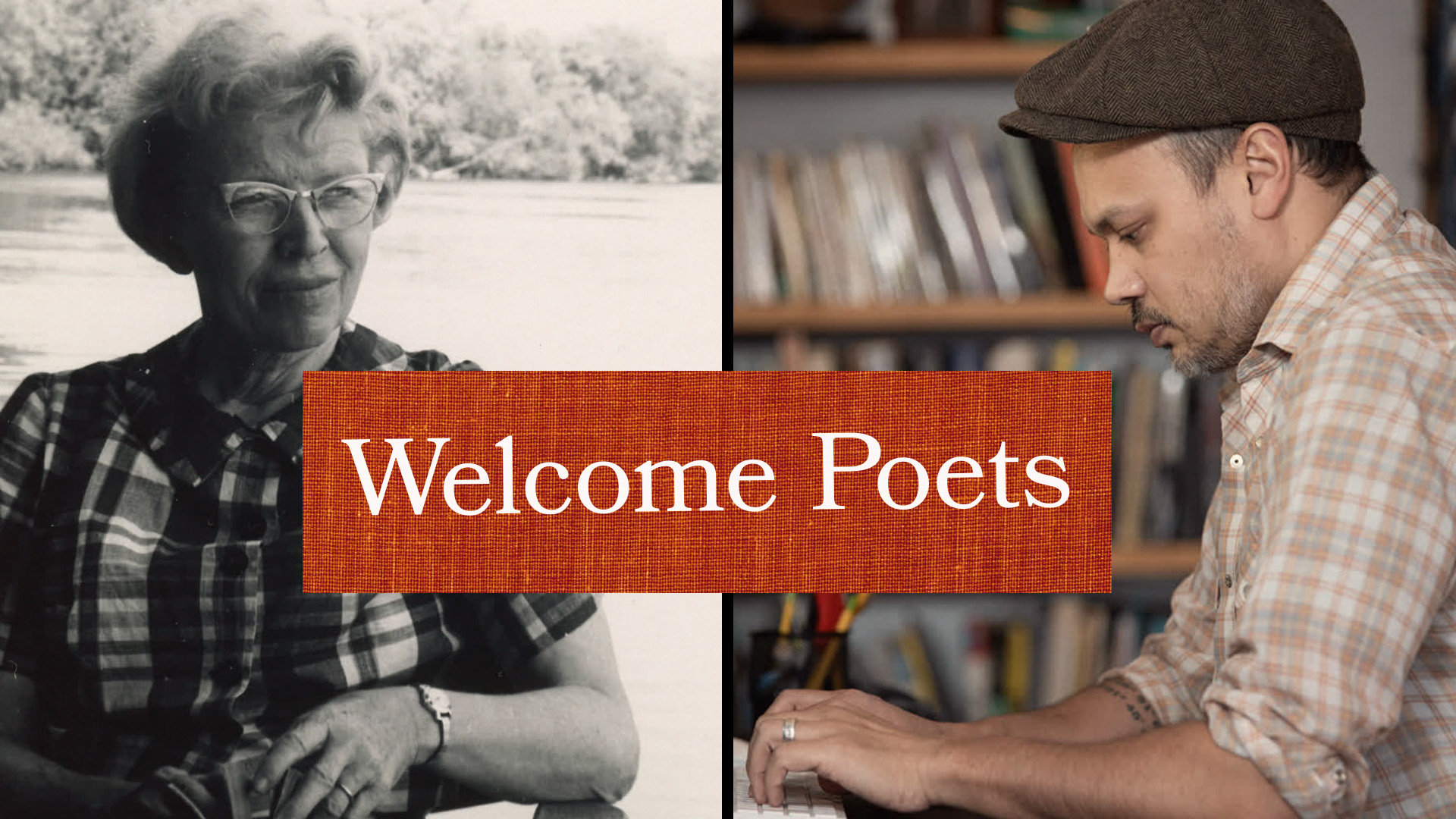
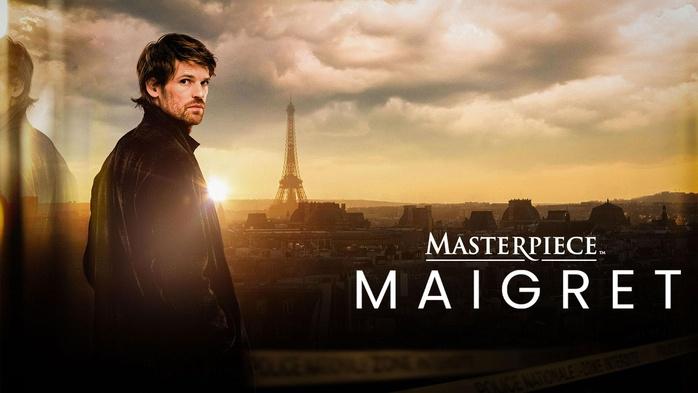



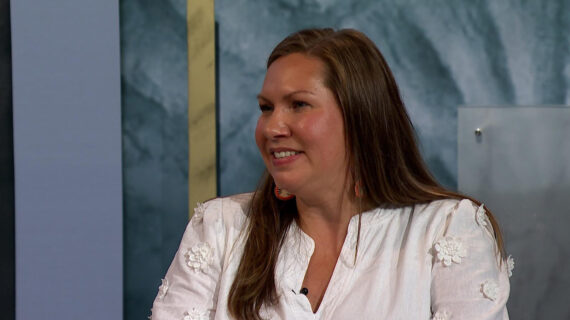
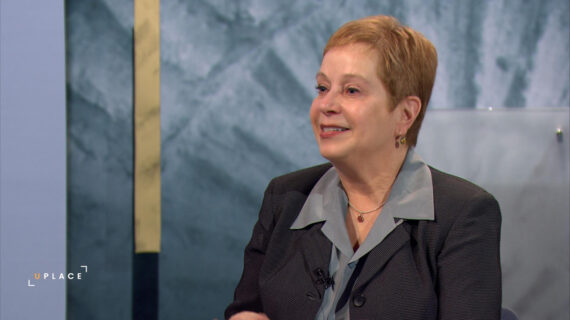

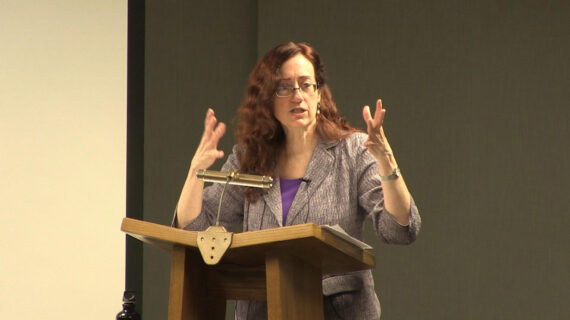
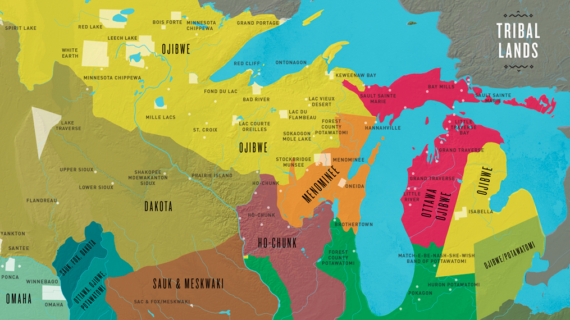


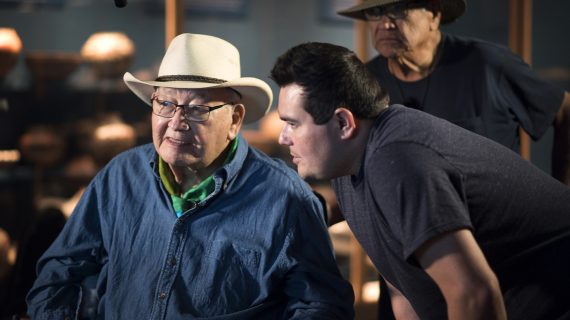

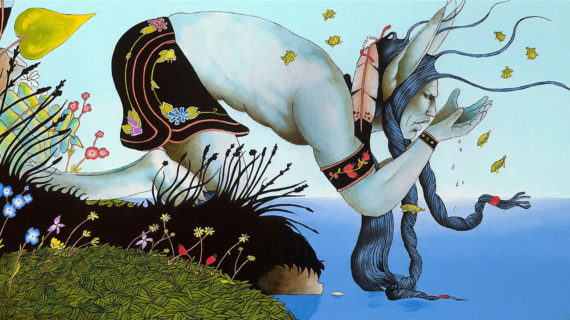

Follow Us